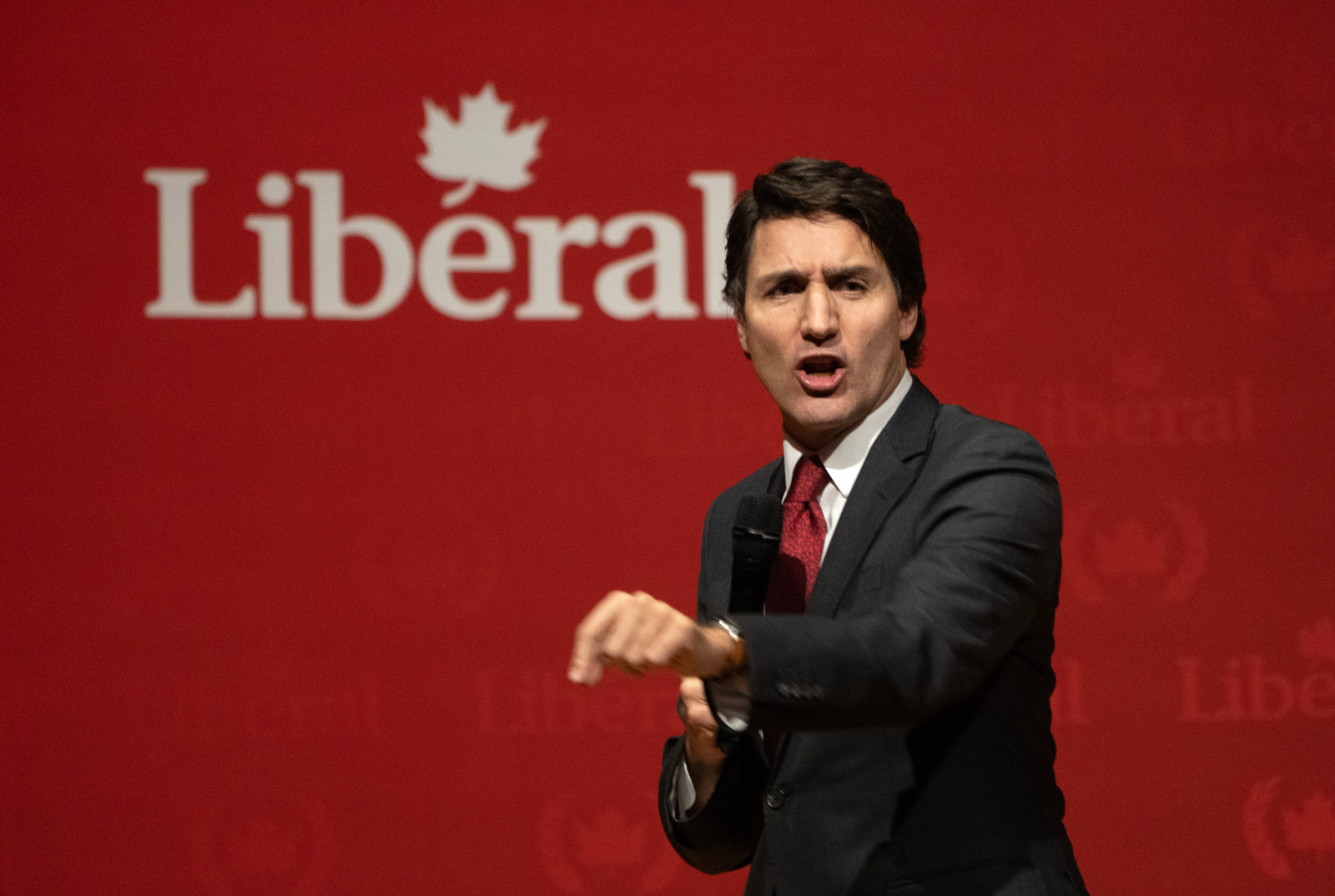In the nineties, social conservative MPs made up an important part of the Liberal Party caucus. Today, they play a minuscule role in the caucus, party activism, or among its electorate. Longtime Liberal members say this is a consequence of not only Justin Trudeau’s decision to make the party explicitly socially progressive in 2014, but also a response to broader cultural shifts in Canada over the past three decades.
“I’m confident that virtually all members of Trudeau’s caucus strongly support abortion rights, equal marriage, the rights of trans and non-binary people, etc. These should all be ‘non-negotiables’ if you’re looking to run for the federal Liberals in 2024,” says Andrew Perez, a Toronto-based public affairs strategist and political commentator. Perez is a longtime Liberal Party member, who has taken part in numerous campaigns, most notably former finance minister Bill Morneau’s 2015 election run.
According to Perez, today there are hardly any members of the Liberal caucus who are socially conservative, privately or publicly.
This was not the case when he began working as a page in the House of Commons in 2004. He says while social conservatives were not a majority in the Liberal Party at the time, they were still a significant force.
“Pro-life positions, ‘family values’, and strong opposition to equal marriage for 2SLGBTQ+ people were universal among this group of MPs hailing mostly from the Roman Catholic tradition.”
Part of the Liberal family
A 1996 article in the Journal for the Scientific Study of Religion found that English and French-speaking Catholics “remain the bulwark of the Liberal Party,” with Protestants favouring the Progressive Conservative and Reform parties. Secular voters leaned towards the NDP.
“I would submit that the Liberal Party had always believed in the traditional definition of marriage, but cared more about the rights of the individual,” says Marc Kealey, a former aide to Liberal Prime Minister John Turner, and principal of Kealey & Associates Inc.
In 1992, Liberal leader Jean Chretien stated that Liberals who opposed abortion were welcome in the party, but he took a firm stance against single-issue, anti-abortion activists who he alleged were “hijacking” the party.
However, Kealey says the socially conservative bloc was not bold enough to outright oppose the party leader’s view.
According to Perez, the eighties and nineties were marked by Liberal Party infighting over social conservative issues as the party wrestled with its identity. Despite its history as a progressive party, the Liberals were a big tent with wide appeal, accommodating various factions including social conservatives. Perez says this ideological diversity, exemplified by groups like “Liberals for Life,” a pro-life group in caucus active at the time, often led to internal conflicts, especially on issues like abortion.
Voting on same-sex marriage
In 1995, a Bloc Quebecois MP presented an unsuccessful motion to recognize same-sex marriage. Just 52 out of 295 MPs voted in favour, including many fellow Bloc members and Liberals from urban ridings in cities like Toronto.
124 MPs voted against the motion, including most of the Reform Party’s 52 MPs. However, a large number of Liberals hailing from across the country, especially in more suburban and rural ridings, broke with their fellow MPs to also vote against.
Other legislation proposing to recognize same-sex marriage also failed to pass in the following years. Same-sex marriage’s legalization would not ultimately begin with legislation, but in the Ontario Court of Appeal, which issued a decision in 2003 that explicitly legalized same-sex marriage in the province immediately.
The rest of Canada’s provinces and territories would legalize same-sex marriage in the next two years before the federal government passed the Civil Marriage Act in 2005, fully legalizing same-sex marriage across Canada.
The decision by Prime Minister Paul Martin to put his government’s support behind the legislation represented a major departure from balancing these competing perspectives in the party to coming out firmly on the side of expanding the rights of sexual minorities.
In response, several Liberal MPs quit cabinet or left the party altogether. These included Pat O’Brien, who left to sit as an Independent, and Joe Comuzzi, who actually quit cabinet.
Tom Wappel, another Liberal MP, was reported to have clashed with Prime Minister Paul Martin behind closed doors. Wappel accused the prime minister of reneging on a promise to allow cabinet ministers to vote freely on the matter.
In 2006, the Liberals wound up losing the multiple majorities they had enjoyed in the 1990s and were replaced by a Conservative government.
Many of the ridings won by Conservatives in the 2006 election were previously represented by Liberal MPs who voted against the 1995 same-sex marriage motion.
The Trudeau era: A line in the sand
When Justin Trudeau was crowned as leader of the party in 2013, Kealey says it soon became clear the party’s big tent no longer had room for social conservatives.
The next year, Trudeau, himself a practicing Catholic, stated no person favouring restrictions on abortion would be greenlit as a candidate in the next election. The only exception would be pro-life MPs who were already sitting in the House of Commons.
“I have made it clear that future candidates need to be completely understanding that they will be expected to vote pro-choice on any bills,” Trudeau said at the time.
Kealey says this severely curtailed the influence of more socially conservative Liberals.
“That in and of itself created a bit of a yin and yang for traditional supporters of pro-life, who were MPs and senators. Many in the party who had an opposing view were marginalized and, some might say, frozen out from the ‘new’ Liberal Party of Canada,” says Kealey.
Given that the Liberals won a mere 34 seats in the 2011 federal election, Trudeau had free rein to ensure the next crop of Liberal nominees fit his progressive mould. They would win a whopping 184 seats.
Those involved in the campaign say the party’s zero-tolerance policy was made clear.
“I think clearly when it came to candidates, there was obviously a directive that was put down that you could only run if you were pro-choice. I think [Trudeau] was actively looking for candidates who were more progressive,” says Dan Arnold, chief strategy officer at Pollara Strategic Insights. Arnold worked in Trudeau’s PMO and was a lead research strategist for the Liberals during the 2015, 2019, and 2021 federal elections.
The last of them
In 2024, one of the last remaining Liberal MPs who opposes abortion is John McKay. The politician has represented Scarborough-Guildwood (formerly Scarborough East) for almost 30 years.
McKay, an evangelical Christian, is well known for his disagreements with his party’s leadership. In 2014, he was caught on tape calling Trudeau’s decision to block pro-life candidates a “bozo eruption.”
“I think the Liberal party has had a tin ear for people of faith, right across (the) spectrum,” McKay told the Winnipeg Free Press a year later.
Others aren’t so harsh. Arnold says the changes Trudeau made to his party actually better reflect changes in Canada itself, rather than just within the Liberals.
“If anything, I think the country has probably shifted a bit more Left over the last 20 years, 30 years, and the move by Trudeau, I think, is a reflection of where the country is.”
Perez notes that, unlike in the 1990s, most Canadians today favour same-sex marriage and access to abortion, including many Conservative MPs who Perez says fit the description of being socially liberal.
He adds that younger voters were the biggest factor in the Liberals’ return to power in 2015 with a majority government. Arnold also estimates that three-quarters of the Liberals’ voter growth in 2015 consisted of people who had voted for the NDP in 2011, or had previously not voted at all.

A change of faith
Canada’s religious demographics have also changed dramatically in the last 30 years.
In 1994, 86 percent of Canadians reported having a religious affiliation according to Statistics Canada. In 2021, the census revealed that rate had dropped to 65.4 percent.
In 1991, Catholics made up 46 percent of the population. In 2021, they were 29 percent.
Surprisingly, despite the decline of organized religion, recent surveys have suggested that while 63 percent of Canadians aged 55 and over support access to abortion at any time, just 50 percent aged 18 to 34 agree.
Recent controversies over parental rights and pushes for more progressive sex education in schools have led to protests from members within many religious immigrant communities, including Muslims, many of whom are part of a key voter bloc for the Liberals. Trudeau himself has condemned efforts by conservative premiers to ensure parents are informed if their child changes their gender identity while at school.
Arnold says the vote drivers for minority communities are not dramatically different from others.
“Most of the time, issues like the economy and health care take precedence, though it’s important to show you share their values,” says Arnold. “The party does research with Canadians from many diverse backgrounds. Different issues play differently in different communities.”
As for Liberal so-cons, for the time being, they remain without a home.
Kealey suggests that the formerly big-tent Liberal Party of Canada does not exist at the moment and that Trudeau has re-fashioned the party in his image. However, he says this is not a new phenomenon in Canadian politics.
“Sir John A. Macdonald did the same thing in the 1860s when he was leader of his party,” he admits. “It was argued by many, even in those days, that there was too much control in the leader’s office, so to make the claim that it is only Trudeau who has fundamentally changed the Liberal Party or party politics is not true. It’s forever been this way in Canada.”
Recommended for You

Ginny Roth: J.D. Vance, Pierre Poilievre, and how they slice their economic pie

David Polansky: As President Biden leaves the race, will the Democratic Party hodgepodge hold?

RCMP spending to protect MPs may have risen 112% since 2018, as Canadian politicians face greater rise in threats

Peter Menzies: The mainstream media should love Doug Ford, now that he’s subsidizing them










